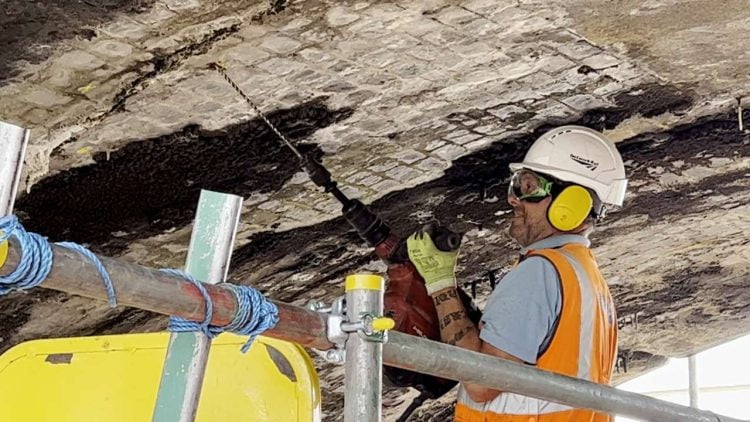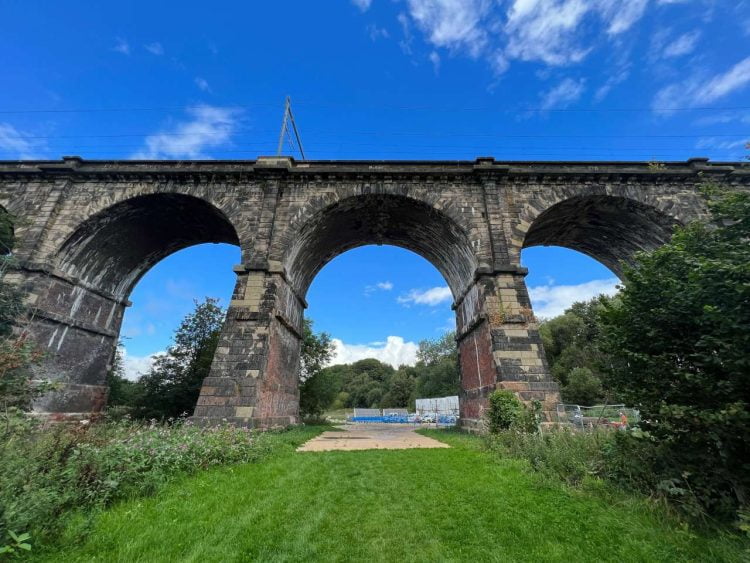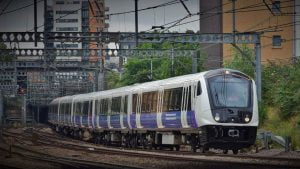Network Rail is repairing the oldest railway viaduct in the world in time for its two hundredth anniversary.
Sankey viaduct in Newton-le-Willows was built between 1928 and 1830, and has great historical significance as the first major railway viaduct in the world.
Railway pioneer George Stephenson designed the viaduct to carry trains across the 160-metre gap over the Sankey valley. Once opened, it connected Manchester and Liverpool, thus forming the world’s first intercity passenger route with a regular timetable.

Also known as ‘Nine Arches’ viaduct, the 193-year-old landmark is now having maintenance works carried out so that it can reach its two hundredth anniversary in 2030 and continue for several more decades. The work is costing £3.8m and will improve passenger and freight journeys between Manchester and Liverpool.
The work will continue for the next four months, as a team of twenty-five engineers and scaffolding specialists will:
- erect scaffolding towers along the span
- repoint mortar using specialist heritage mixes to match the existing materials
- carry out extensive brickwork repairs
- paint historic metalwork in heritage colours
- install strengthening anchors to secure any cracks
- remove overgrown weeds and plants
- clean graffiti from the top of the stonework
- fit three new pairs of pattress plates (metalwork which secures the structure).
The viaduct has Grade I listed status, which was awarded in 1966, and due to this, Network Rail has to use free-standing scaffolding so as not to interfere with the historic structure.
Network Rail has today (Wednesday 13 September) released footage of the work being carried out.
Preparation for the work involved using laser scanners and drones to map the viaduct in detail. Contractor Commendium carried out a LiDAR survey in conjunction with heritage consultancy firm Wardell Armstrong. LiDAR technology uses dozens of separate scans taken from locations underneath and on top of the viaduct, with light emitted from a rapidly-firing laser like a strobe light. This light travels to the ground and reflects off objects such as buildings and tree branches and returns to the LiDAR sensor where it is recorded. This data is then used to build a 3D computer model, along with footage obtained by drones.
The 3D computer model helps engineers with the current repairs, and will enable monitoring of areas that m any need attention in the future.
Network Rail has worked closely with St Helens and Warrington council planners to ensure that the work complies with heritage guidelines.
More information about how Network Rail looks after heritage structures is available here.

Viaduct statistics:
- 193 years old
- built between 1828 – 1830
- nine arches each spanning 15 metres
- 160 metres long
- between 17 and 21m above the valley floor
- carries twin railway lines
- used by up to five trains per hour
Mark Evans, Network Rail Capital Delivery senior programme manager, said: “It’s a privilege to look after so many significant buildings and structures across the rail network, but Sankey viaduct has got to be one of the unsung heroes of Victorian civil engineering.
“Its huge significance in the creation of the railway as we know it today is perhaps not so well known – but we’re hoping to change that. This restoration will not only make sure it looks good to celebrate its 200th anniversary in 2030, but will also secure passenger and freight trains for the future too.”






Responses